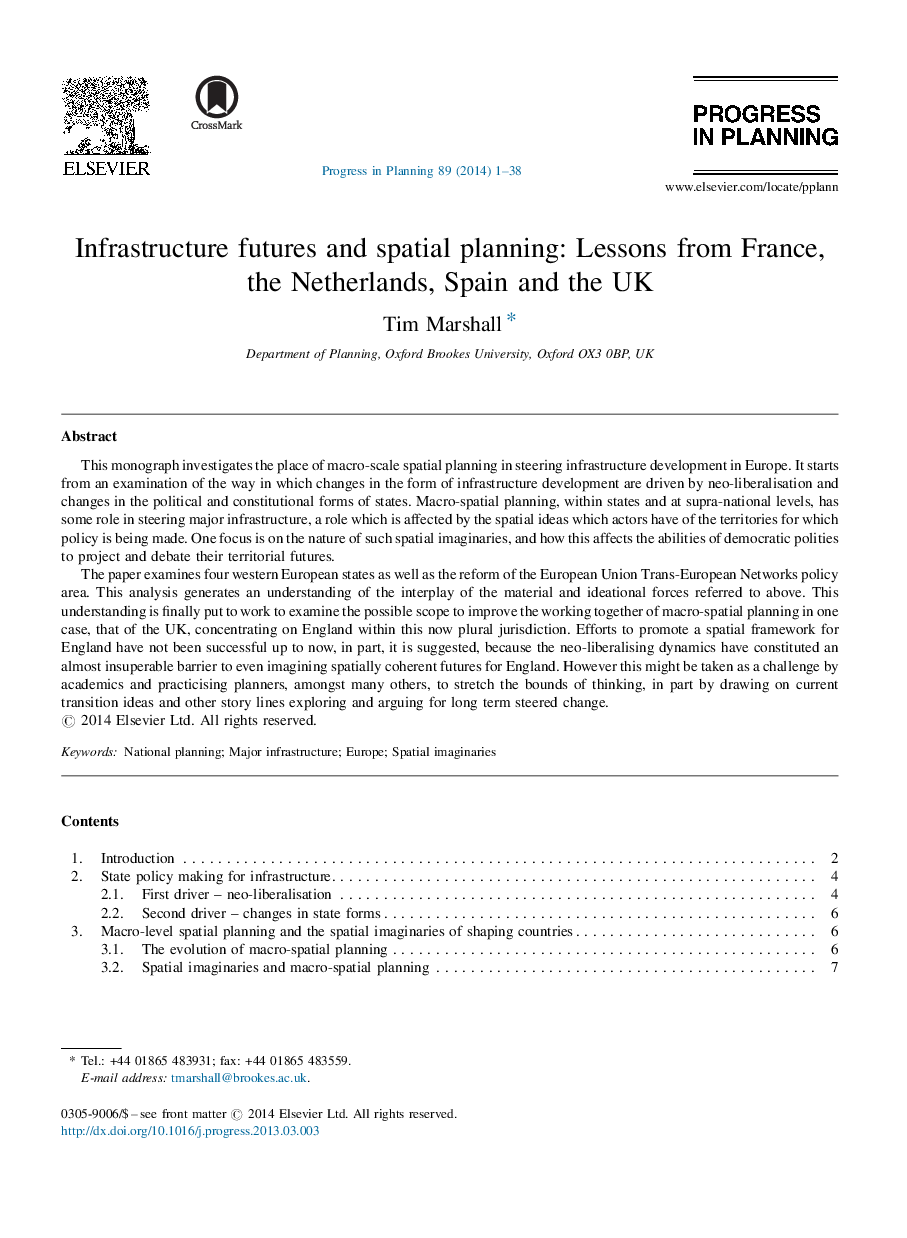| کد مقاله | کد نشریه | سال انتشار | مقاله انگلیسی | نسخه تمام متن |
|---|---|---|---|---|
| 1050845 | 1484755 | 2014 | 38 صفحه PDF | دانلود رایگان |
• EU states differ much in their national spatial steering of major infrastructure.
• EU integrating activity however has increasing significance.
• Neoliberalisation forms big barriers to effective national steering of infrastructure.
• New ways to imagine spatially major infrastructure futures will reap long run value.
• Infrastructure policy should connect planning, regulatory and financial aspects.
This monograph investigates the place of macro-scale spatial planning in steering infrastructure development in Europe. It starts from an examination of the way in which changes in the form of infrastructure development are driven by neo-liberalisation and changes in the political and constitutional forms of states. Macro-spatial planning, within states and at supra-national levels, has some role in steering major infrastructure, a role which is affected by the spatial ideas which actors have of the territories for which policy is being made. One focus is on the nature of such spatial imaginaries, and how this affects the abilities of democratic polities to project and debate their territorial futures.The paper examines four western European states as well as the reform of the European Union Trans-European Networks policy area. This analysis generates an understanding of the interplay of the material and ideational forces referred to above. This understanding is finally put to work to examine the possible scope to improve the working together of macro-spatial planning in one case, that of the UK, concentrating on England within this now plural jurisdiction. Efforts to promote a spatial framework for England have not been successful up to now, in part, it is suggested, because the neo-liberalising dynamics have constituted an almost insuperable barrier to even imagining spatially coherent futures for England. However this might be taken as a challenge by academics and practicising planners, amongst many others, to stretch the bounds of thinking, in part by drawing on current transition ideas and other story lines exploring and arguing for long term steered change.
Journal: Progress in Planning - Volume 89, April 2014, Pages 1–38
